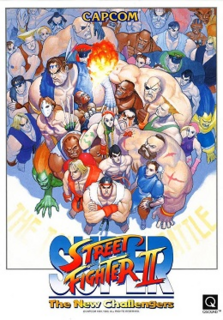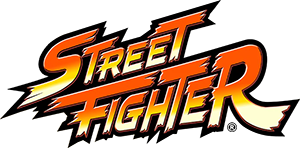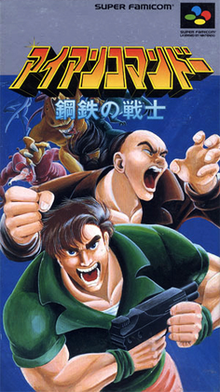
Asmik Ace, Inc., formerly Asmik Ace Entertainment, Inc. is a Japanese film production and distribution company. In the past, the company has distributed video games. It was formed in 1997 through a merger between the Asmik Corporation and Ace Entertainment, both of Japan. The name Asmik comes from its three founding companies: Ask, Sumitomo and Kodansha. The company is headquartered on the third floor of the Lapiross Roppongi building in Minato, Tokyo, and is a wholly owned division of Jupiter Telecommunications (J:COM).
In the history of video games, the fourth generation of game consoles, more commonly referred to as the 16-bit era, began on October 30, 1987, with the Japanese release of NEC Home Electronics' PC Engine. Although NEC released the first console of this era, sales were mostly dominated by the rivalry between Sega and Nintendo across most markets: the Sega Mega Drive and the Super Nintendo Entertainment System. Cartridge-based handheld consoles became prominent during this time, such as the Nintendo Game Boy (1989), Atari Lynx (1989), Sega Game Gear (1990) and NEC TurboExpress (1990).
The fifth-generation era refers to computer and video games, video game consoles, and handheld gaming consoles dating from approximately October 4, 1993 to March 23, 2006. For home consoles, the best-selling console was the Sony PlayStation, followed by the Nintendo 64, and then the Sega Saturn. The PlayStation also had a redesigned version, the PSone, which was launched on July 7, 2000.

Contra is a run-and-gun shooter video game developed and published by Konami, originally developed as a coin-operated arcade game in 1986 and released on February 20, 1987. A home version was released for the Nintendo Entertainment System in 1988, along with ports for various home computer formats, including the MSX2. The arcade and computer versions were localized as Gryzor in Europe, and the NES version as Probotector in PAL regions.

Super Street Fighter II: The New Challengers is a competitive fighting game produced by Capcom and originally released as an arcade game in 1993. It is the fourth game in the Street Fighter II sub-series of Street Fighter games, following Street Fighter II: Hyper Fighting. It refines and balances the existing character roster from the previous versions, and introduces four new characters. It is the first game on Capcom's CP System II hardware, with more sophisticated graphics and audio over the original CP System hardware used in previous versions of Street Fighter II.
1995 saw many sequels and prequels in video games, such as Dragon Quest VI, Mario's Picross, Mega Man 7, Super Mario World 2: Yoshi's Island, and Tekken 2, along with new titles such as Battle Arena Toshinden, Chrono Trigger, Rayman, Soul Edge, Twisted Metal, Star Wars: Dark Forces, Destruction Derby, Wipeout and Jumping Flash!
1994 saw many sequels and prequels in video games, such as Super Metroid, Donkey Kong Country, Final Fantasy VI, Sonic 3 & Knuckles, Super Street Fighter II Turbo and Virtua Fighter 2 and Doom II, along with new titles such as Daytona USA, Ace Driver, Alpine Racer and Tekken.
1991 saw many sequels and prequels in video games, such as Street Fighter II, Final Fantasy IV, Mega Man 4, and The Legend of Zelda: A Link to the Past, along with new titles such as Sonic the Hedgehog, F-Zero and Lemmings. The year's highest-grossing video game worldwide was Capcom's arcade fighting game Street Fighter II. The year's best-selling home system was the Game Boy for the second year in a row, while the year's best-selling home video game was Sega's Sonic the Hedgehog, which was also the year's top video game rental in the United States.
1988 saw many sequels and prequels in video games, such as Dragon Quest III, Super Contra, Super Mario Bros. 2, Mega Man 2, Double Dragon II: The Revenge, and Super Mario Bros. 3, along with new titles such as Assault, Altered Beast, Capcom Bowling, Ninja Gaiden, RoboCop, Winning Run and Chase H.Q.
1986 saw many sequels and prequels in video games, such as Super Mario Bros. 2, along with new titles such as Arkanoid, Bubble Bobble, Castlevania, Dragon Quest, Ikari Warriors, The Legend of Zelda, Metroid, Out Run and R.B.I. Baseball. The year's highest-grossing arcade video games were Hang-On in Japan, Hang-On and Gauntlet in the United States, and Nemesis (Gradius) in London. The year's best‑selling home system was the Nintendo Entertainment System (Famicom) for the third year in a row, while the year's best-selling home video games in Western markets were Super Mario Bros. in the United States and Yie Ar Kung-Fu in the United Kingdom.

U.N. Squadron is a 1989 side-scrolling shooting game released by Capcom for the CPS arcade hardware and for the Super Nintendo Entertainment System. The game was released in Japan as Area 88, and is based on the manga series of the same name, featuring the same main characters. Their mission is to stop a terrorist group known as Project 4. It was followed by a spiritual successor Carrier Air Wing.

Captain America and the Avengers is a beat 'em up arcade game developed and released by Data East in 1991. It features the Avengers team of Marvel Comics characters in a side-scrolling brawling and shooting adventure to defeat the evil Red Skull. The game received ports for the Sega Genesis/Mega Drive, Super Nintendo Entertainment System, Game Boy and Game Gear. A different Data East game was released for the Nintendo Entertainment System.

Legend is a side-scrolling hack and slash beat 'em up video game developed by Arcade Zone and originally published in North America by Seika Corporation in April 1994 and later in Europe by Sony Electronic Publishing on December 21 of the same year for the Super Nintendo Entertainment System. It is the first game to be solely developed by the duo of Carlo Perconti and Lyes Belaidouni at Arcade Zone, who both would later go on to found Toka and HyperDevbox Japan respectively.
The history of Nintendo begins in 1889, founded to produce handmade hanafuda playing cards. In the mid-1900s, the company licensed third-party card graphics, such as Disney characters. In the 1960s, it expanded into countless varieties of toys, including original designs by Gunpei Yokoi. In the 1980s, it became one of the most prominent figures in the video game industry including designs by Shigeru Miyamoto such as mascot Mario and breakthrough hit arcade video game Donkey Kong. Nintendo Co., Ltd. is now the largest video game company by revenue, as a Japanese multinational consumer electronics company headquartered in Kyoto, Japan.

Street Fighter, commonly abbreviated as SF or スト (Suto), is a Japanese media franchise centered on a series of fighting video and arcade games developed and published by Capcom. The first game in the series was released in 1987, followed by six other main series games, various spin-offs and crossovers, and numerous appearances in other media. Its best-selling 1991 release Street Fighter II established many of the conventions of the one-on-one fighting genre.

Bionic Commando, originally released as Hitler's Resurrection: Top Secret in Japan, is a platform game released by Capcom for the Family Computer and Nintendo Entertainment System in 1988. It is based on the 1987 arcade game Bionic Commando.

The Nintendo Entertainment System (NES) is an 8-bit third-generation home video game console produced by Nintendo. It was first released in Japan in 1983 as the Family Computer (FC), commonly known as the Famicom. The NES, a redesigned version, was released in American test markets on October 18, 1985, before becoming widely available in North America and other countries.

Super Contra, known as Super Contra: The Alien Strikes Back in Japan, is a run-and-gun shooter video game by Konami, originally released as a coin-operated arcade game in December 1987. It is the sequel to the original Contra and part of the Contra series. The game stars Bill Rizer and Lance Bean as they are sent to thwart another alien invasion from the vicious Red Falcon.

Contra III: The Alien Wars is a 1992 run and gun video game developed and published by Konami for the Super Nintendo Entertainment System (SNES). It is the third home console entry in the Contra series after Contra (1988) and Super C (1990) for the Nintendo Entertainment System (NES). In PAL regions, it was retitled Super Probotector: Alien Rebels and the player characters were replaced with robots. The player is tasked with fighting off an alien invasion of Earth across six stages. Four stages feature side-scrolling action traditional to the series while two are presented from an overhead perspective. It is the first Contra title to have been directed by Nobuya Nakazato who later directed other games in the series. He designed Contra III to feature more comical elements, a more cinematic soundtrack, and tighter stage design than its predecessors.

Captain Commando is a 1991 futuristic side-scrolling beat 'em up originally developed and published by Capcom as an arcade video game, and later ported to several other platforms. It was the seventeenth game produced for the company's CP System hardware. The game stars the titular superhero who was originally conceived as a fictional spokesman used by Capcom USA in the company's console games during the late 1980s. On September 13, 2018, Capcom announced Capcom Beat 'Em Up Bundle with Captain Commando being one of seven titles and released digitally for PlayStation 4, Nintendo Switch, Xbox One and Microsoft Windows on September 18, 2018.












